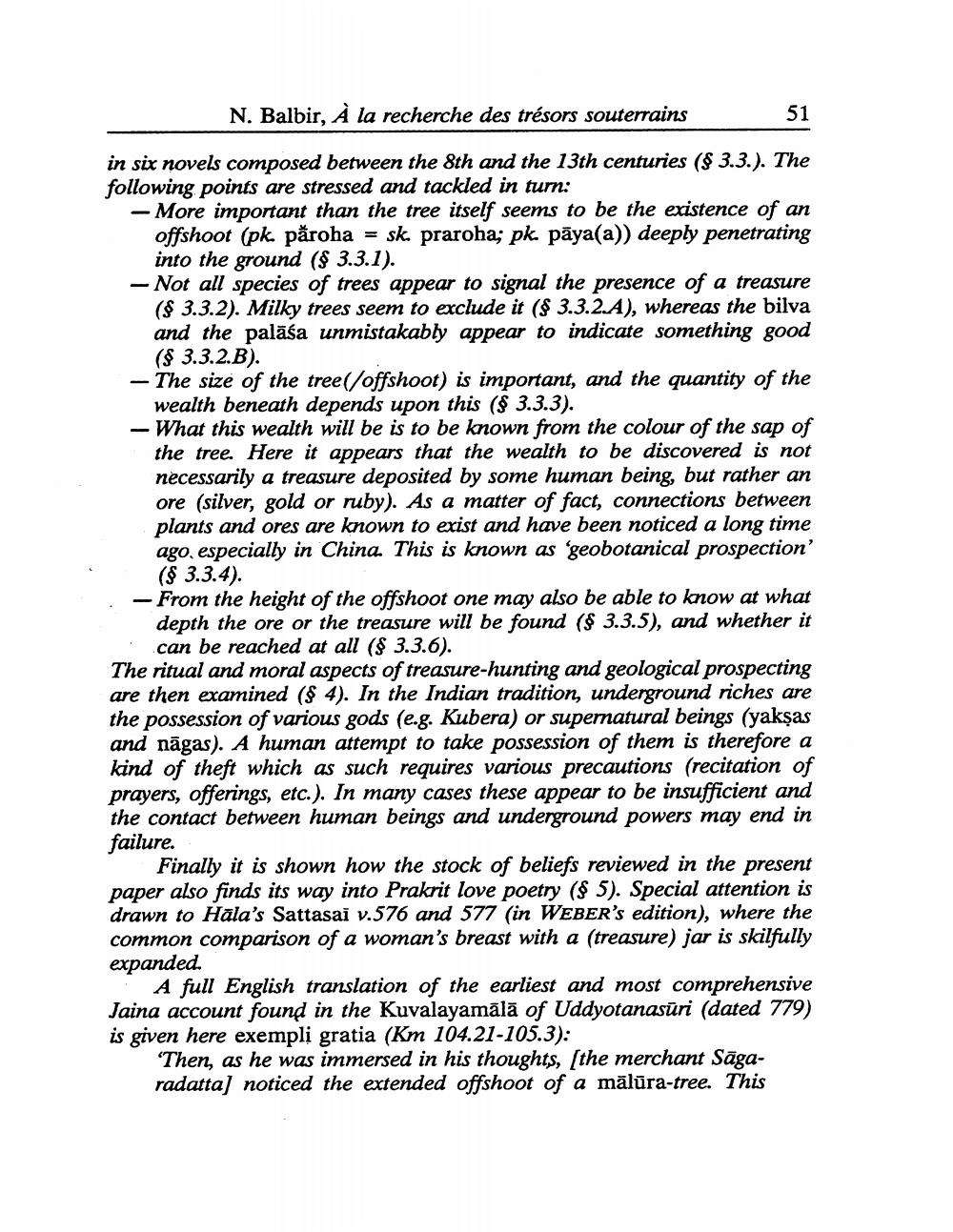________________
N. Balbir, À la recherche des trésors souterrains
51
in six novels composed between the 8th and the 13th centuries (§ 3.3.). The following points are stressed and tackled in turn:
- More important than the tree itself seems to be the existence of an offshoot (pk. păroha = sk. praroha; pk. pāya(a)) deeply penetrating into the ground (§ 3.3.1).
- Not all species of trees appear to signal the presence of a treasure ($ 3.3.2). Milky trees seem to exclude it (§ 3.3.2.A), whereas the bilva and the palasa unmistakably appear to indicate something good ($ 3.3.2.B).
-The size of the tree(/offshoot) is important, and the quantity of the
wealth beneath depends upon this (§ 3.3.3).
- What this wealth will be is to be known from the colour of the sap of the tree. Here it appears that the wealth to be discovered is not necessarily a treasure deposited by some human being, but rather an ore (silver, gold or ruby). As a matter of fact, connections between plants and ores are known to exist and have been noticed a long time ago especially in China. This is known as 'geobotanical prospection' ($ 3.3.4).
- From the height of the offshoot one may also be able to know at what depth the ore or the treasure will be found (§ 3.3.5), and whether it can be reached at all (§ 3.3.6).
The ritual and moral aspects of treasure-hunting and geological prospecting are then examined ($ 4). In the Indian tradition, underground riches are the possession of various gods (e.g. Kubera) or supernatural beings (yakṣas and nāgas). A human attempt to take possession of them is therefore a kind of theft which as such requires various precautions (recitation of prayers, offerings, etc.). In many cases these appear to be insufficient and the contact between human beings and underground powers may end in failure.
Finally it is shown how the stock of beliefs reviewed in the present paper also finds its way into Prakrit love poetry (§ 5). Special attention is drawn to Hala's Sattasai v.576 and 577 (in WEBER's edition), where the common comparison of a woman's breast with a (treasure) jar is skilfully expanded.
A full English translation of the earliest and most comprehensive Jaina account found in the Kuvalayamālā of Uddyotanasuri (dated 779) is given here exempli gratia (Km 104.21-105.3):
'Then, as he was immersed in his thoughts, [the merchant Sāgaradatta] noticed the extended offshoot of a mālūra-tree. This




